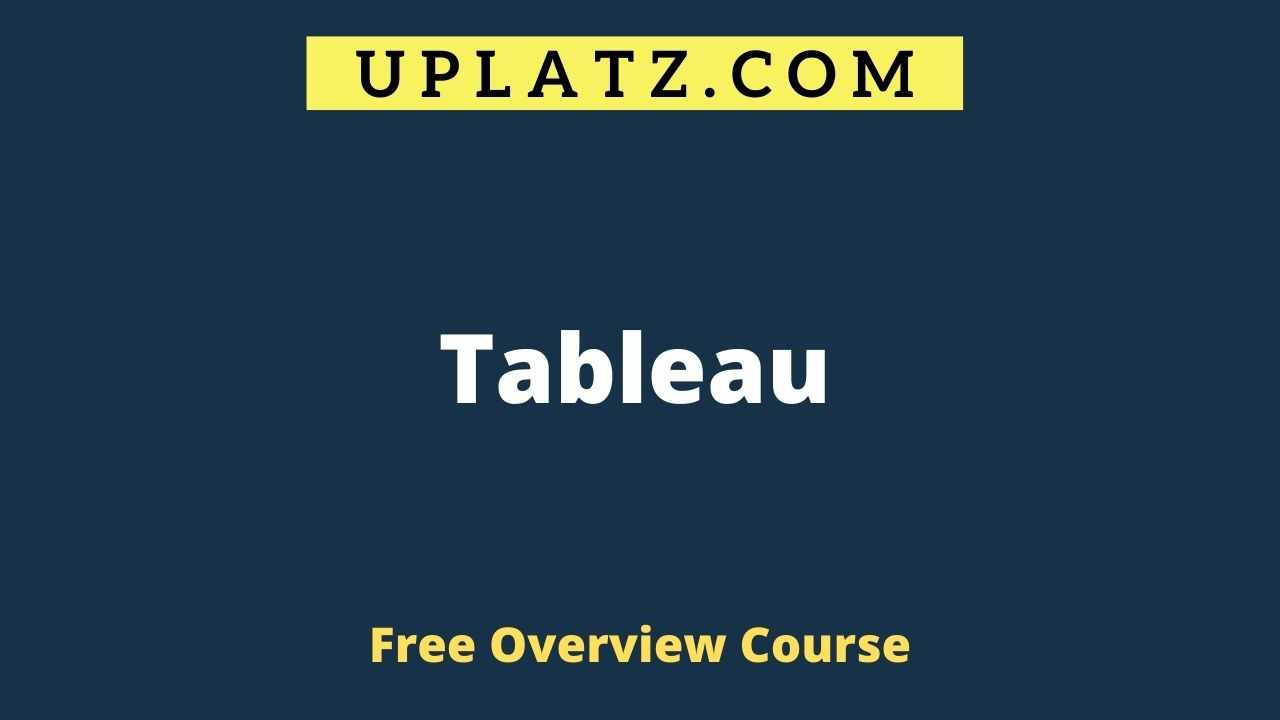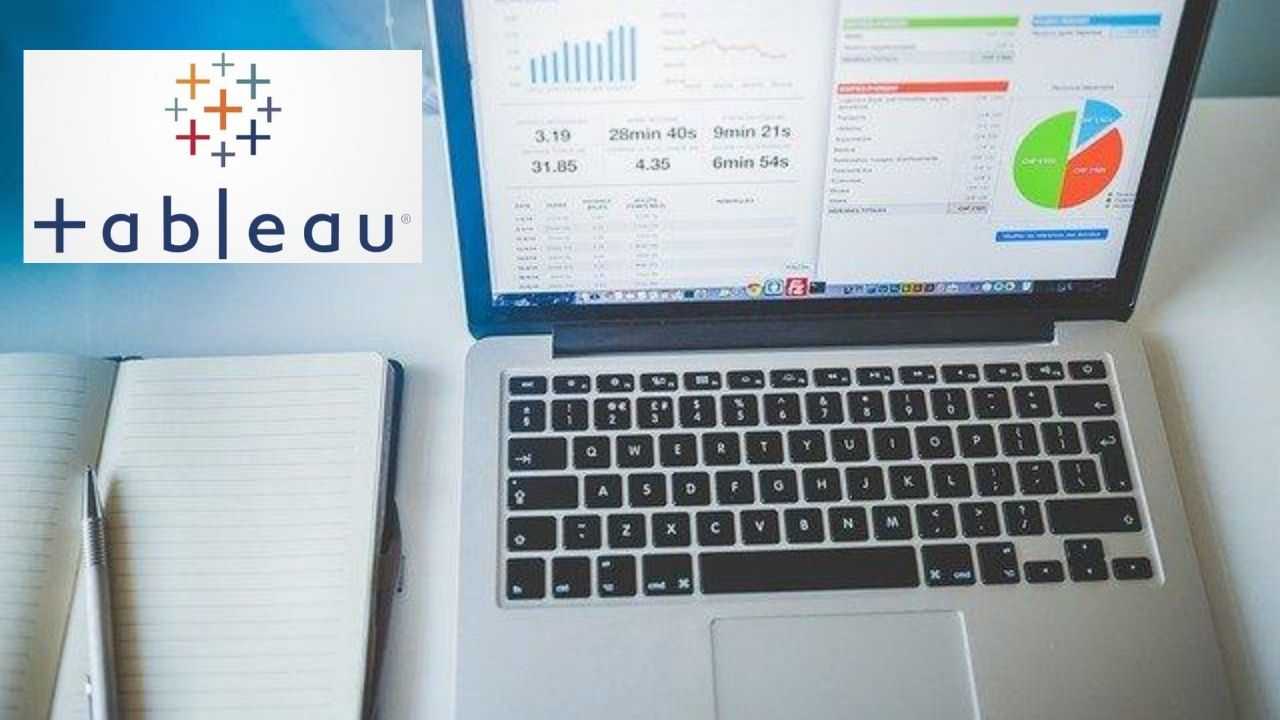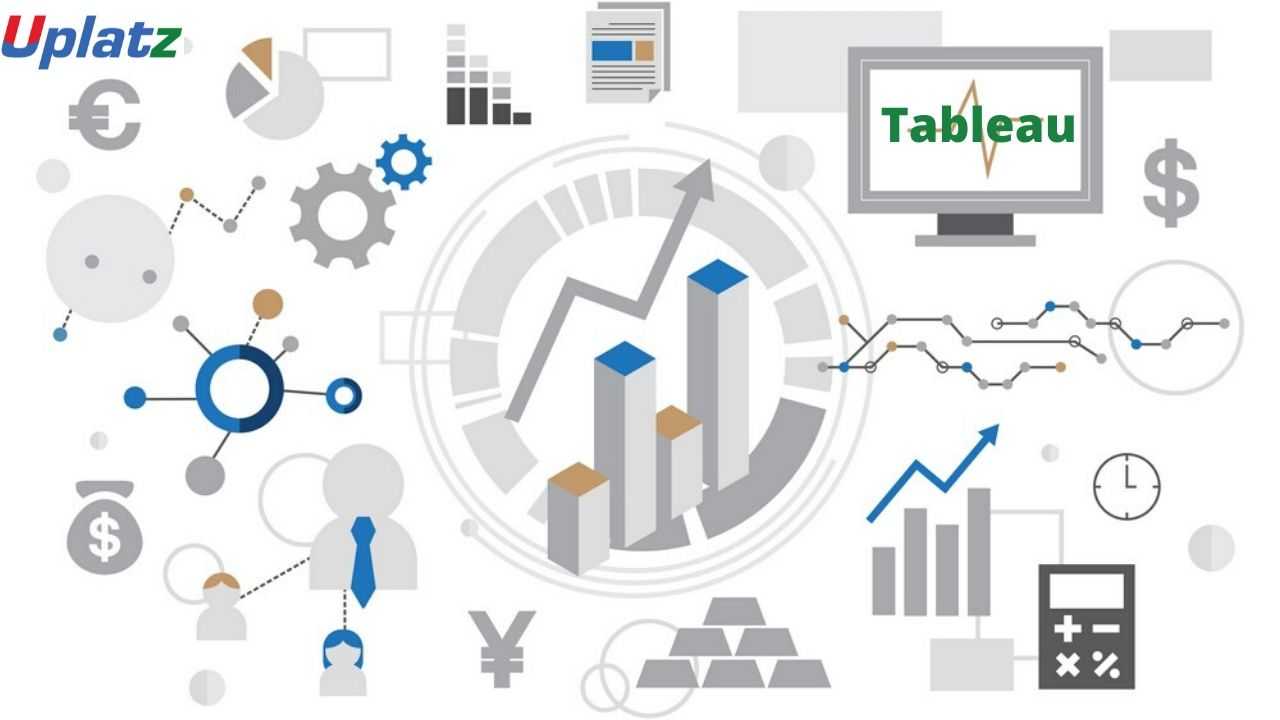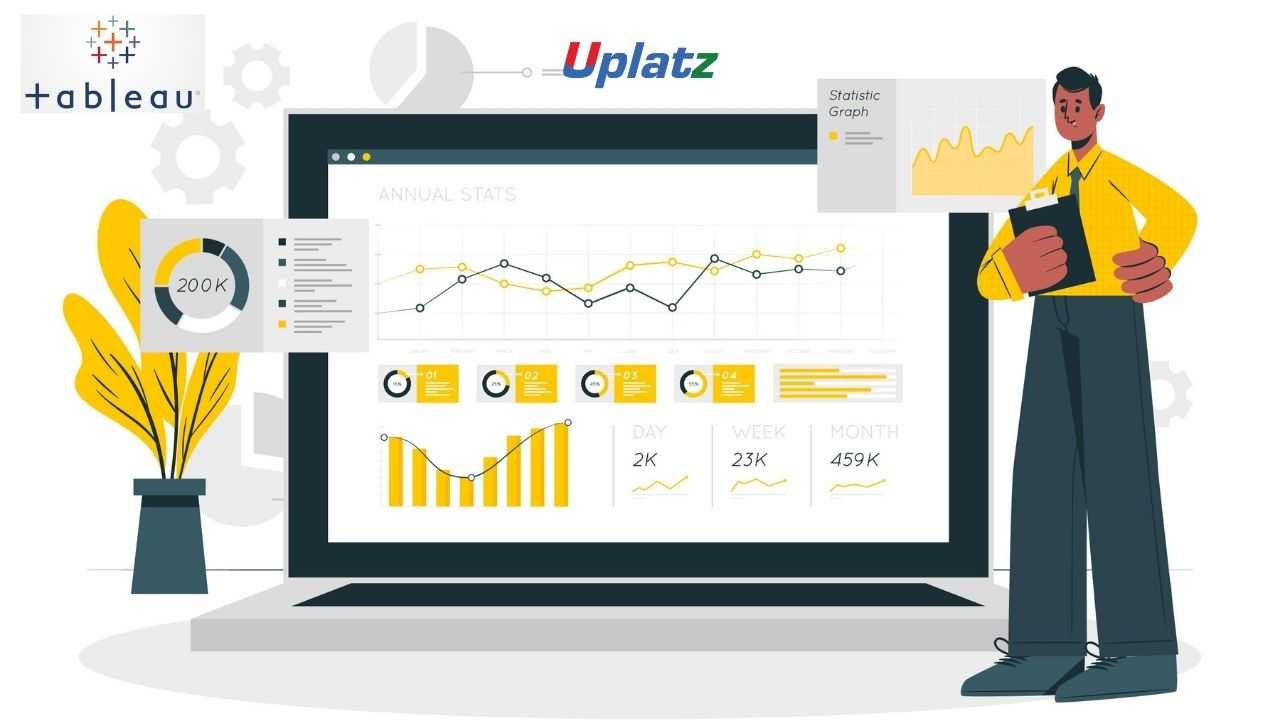Overview Course - Tableau
Learn about Tableau interface and Tableau terminology, writing custom codes & be a Tableau mentor. View Course Curriculum
Price Match Guarantee
Full Lifetime Access
Access on any Device
Technical Support
Secure Checkout
Course Completion Certificate
View Course Curriculum
Price Match Guarantee
Full Lifetime Access
Access on any Device
Technical Support
Secure Checkout
Course Completion Certificate
 40% Started a new career
Enroll Now
40% Started a new career
Enroll Now
-
 28% Got a pay increase and promotion
28% Got a pay increase and promotion
Students also bought -
-

- Tableau
- 5 Hours
- GBP 12
- 253 Learners
-

- Tableau (basic to advanced)
- 20 Hours
- GBP 12
- 65 Learners
-

- Tableau (comprehensive)
- 20 Hours
- GBP 12
- 372 Learners

This is an overview course on Tableau while the complete detailed-level Tableau course is available at - https://training.uplatz.com/online-it-course.php?id=tableau-186. Tableau is a powerful data analytics tool which helps in simplifying raw data into easy understandable format. It is heavily used in the Business Intelligence industry. The visualizations created here are in the form of dashboards and worksheets and along with the professionals, the data which is created in Tableau is easily understandable by even a non-technical person in the organization.
Some of the most important features of Tableau include Data Blending, Real-time Analysis and Collaboration of the Data. The highlighting point of this software is that, because of its simplicity, it has garnered interest among the non-technical persons from all sectors such as business, researchers, other industries etc. It has got its own product suite such as Tableau Desktop, Tableau Public, Tableau Online, Tableau Server and Tableau Reader.
With this Tableau course from Uplatz, students will start learning from its basics such as its history, interface and its components, along with the grouping, parameters, formatting, creating sets and many more. The course contents of this Tableau course have been made with utmost simplicity so that any non-technical student can also enroll for this course and upgrade his skills in one of the most powerful yet simple data visualization tools of today’s time.
Course/Topic - Tableau overview - all lectures
-
Data Connections
-
You can build data views by dragging fields from the Data window and dropping them onto the shelves that are part of every Tableau worksheet.
-
Filters - part 1
-
Calculations - part 6
The objective of this Tableau course is to provide learners with a comprehensive understanding of Tableau’s data visualization and business intelligence capabilities, enabling them to effectively analyze and present data insights. Participants will gain hands-on experience with advanced data analysis. The course covers essential topics including data connections, calculated fields, and best practices for visual storytelling. By the end of the course, learners will be adept at using Tableau to transform complex data into clear, actionable insights, facilitating data-driven decision-making and enhancing their organization's overall analytical capabilities.
-Key Course Objectives-
.1) Understand the role and importance of Tableau in data visualization and analytics.
.2) Learn about the architecture and key components of Tableau, including Tableau Desktop, Tableau Server, and Tableau Online.
.3) Gain proficiency in connecting to various data sources and importing data into Tableau.
.4) Explore Tableau's capabilities for creating interactive dashboards, reports, and visualizations.
.5) Understand different types of charts and graphs available in Tableau and when to use them effectively.
.6) Learn about advanced features in Tableau such as calculated fields, parameters, and sets.
.7) Develop skills in data exploration, analysis, and storytelling using Tableau.
.8) Discuss best practices for designing effective dashboards and visualizations in Tableau.
.9) Analyze real-world case studies and examples of successful Tableau implementations across different industries.
.10) Prepare for potential Tableau certification exams (if applicable) by covering exam topics and practice scenarios.
These objectives aim to provide participants with a comprehensive understanding of Tableau and practical skills to effectively analyze data and create impactful visualizations for decision-making and reporting purposes.
·1) Tableau History, Interface and Components
·2) Connecting to databases and preparing data
·3) Data Refresh and Blending
·4) Sorting
·5) Grouping
·6) Creating Sets
·7) Filters
·8) Filter shelves
·9) Quick Filter
·10) Parameters
·11) Formatting
·12) Trend Lines and reference lines
·13) Drills
·14) Introduction to Dashboards and Story
·15) Building dashboards
·16) Layouts and Formatting
·17) Interactivity
·18) StoryPoints
·19) Maps
·20) Background Images
·21) Calculations Syntax
·22) Modifying Table calculations
·23) Aggregations and LOD Expressions
·24) Advanced Charts and graphs (Pareto, Waterfall, Funnel,..)
·25) Histograms
·26) Tree maps and bubble charts
·27) Best practices
·28) Case Studies
The Tableau Certification ensures you know planning, production and measurement techniques needed to stand out from the competition.
Tableau is a leading data visualization tool used for data analysis and business intelligence. Gartner's Magic Quadrant classified Tableau as a leader for analytics and business intelligence.
Tableau is a visual analytics engine that makes it easier to create interactive visual analytics in the form of dashboards. These dashboards make it easier for non-technical analysts and end users to convert data into understandable, interactive graphics.
TabPy is an Analytics Extension from Tableau which enables us as a user to execute Python scripts and saved functions using Tableau. Using TabPy, Tableau can run Python script on the fly and display the results as a Visualization.
The Tableau Desktop Specialist Certification tests foundational product knowledge. It is the easiest level of certification that Tableau offers and has no expiration date, unlike the more advanced certifications that are only valid for two or three years.
Uplatz online training guarantees the participants to successfully go through the Tableau Certification provided by Uplatz. Uplatz provides appropriate teaching and expertise training to equip the participants for implementing the learnt concepts in an organization.
Course Completion Certificate will be awarded by Uplatz upon successful completion of the Tableau online course.
The Tableau draws an average salary of $120,000 per year depending on their knowledge and hands-on experience.
The job is a perfect career in tableau if the individual has good team skills, problem-solving skills, managerial skills, and time management. The main job role of a Tableau developer is to prepare visualizations and presentations of the systems. They are also required to infer the data to enhance business excellence.
There is a great demand for Tableau experts, but there are also huge rewards on offer as well.The average annual pay for a Tableau Developer is $108,697 a year. The average salaries too, are on an upward trend with the recent average salaries going up to as high as $158,000.
Note that salaries are generally higher at large companies rather than small ones. Your salary will also differ based on the market you work in.
Tableau Developer.
BI Developer.
Technical Developer.
Salesforce Developer.
Q1.What is Tableau?
Ans
- The Tableau Ecosystem
- Know your way around
Q2.How do I get Started?
Ans
- The analytical process
- Create your first dashboard
Q3.How do i Connect to my Data?
Ans
- Connecting live to data sources
- Splitting fields
- Creating Re-usable Data Sources
- Sharing Data Sources
- The impact of underlying changesDeclaring data types
Q4.How Can I Explore my Data?
Ans
- Filtering Dimensions and Measures
- Filtering Dates
- Sorting data in views
Q5.How do I Organise my Data?
Ans
- Combining multiple members within a dimension to create a Group
- Combining multiple Dimensions to Create a Hierarchy
Q6.How Does Tableau Deal with Dates?
Ans
- Discrete and Continuous Dates
- Custom Date
Q7.How do I analyse Multiple Measure in the same Chart?
Ans
- Measure Values and Measure Names
- Multiple Measures Sharing a single Axis
- Dual axis with multiple chart types
- Scatter (XY) Plots
Q8.How can I map my data?
Ans
- Navigation and Map Options
- Geographic Groups and custom territories
Q9.How can I produce Tabular reports?
Ans
- Creating Text Tables in Tableau
- Adding insight with Highlight Tables
Q10.How do I make calculations on my data?
Ans
- Creating Calculated Fields
- Working with Aggregations
- String Calculations
- Date Calculations









